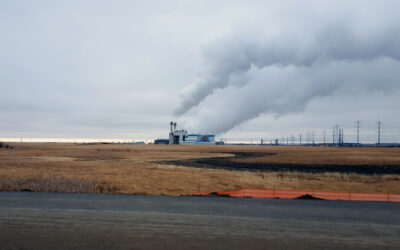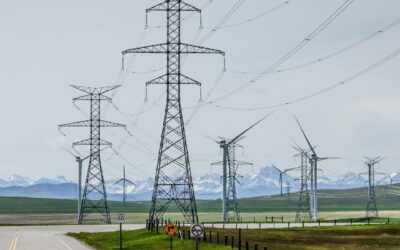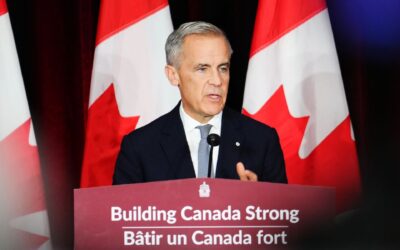Update: The draft Clean Electricity Regulations were released in August 2023. Read our assessment.
Clean electricity is beating everyone’s expectations these days. We’ve seen record expansions of renewable energy worldwide, outshining expert forecasts. Global investment in solar, for example, is set to eclipse total investment in oil production for the first time ever.
Here in Canada, renewables are surging in places like Alberta, where they have been enabled by both government policy and market forces, and have helped eliminate reliance on coal this year, spurring enormous investments in Gigawatt-sized projects along the way. Alberta’s pause on renewables is out of step with this remarkable progress. It’s a pause on billions of dollars in investment and jobs that come with that.
Despite this recent setback, one of the most important policies for clean electricity is expected in the near future: the federal Clean Electricity Regulations (CER), which are meant to push Canadian electricity emissions toward net zero. The goal is to lay the foundation for a net zero economy by mid-century through smart, efficient regulatory muscle that establishes an enforceable standard in the electricity sector that will drive emissions to net zero. The CER would complement other emissions-cutting supports and actions—clean electricity tax incentives, grants and other investment tools (see here for a detailed breakdown by province), and policies like mandates for zero-emissions vehicles and carbon pricing.
As we’ve said before, clean electricity is a critical must-have for future business investments and jobs in Canada, and is core to every conceivable pathway to meeting our national emissions targets. Recent polling also highlighted that Canadians right across the country see the CER as an important part of achieving a net zero electricity grid by 2035.
Done right, switching to clean electricity will save Canadians money. Our research shows that, on average, households will save 12 per cent on energy costs by 2050 as they switch off fossil fuels to power their homes, vehicles and businesses with clean electricity.
In anticipation of the release of the final regulations, we’ve outlined five pieces to watch for that will affect their ability to cost-effectively reduce emissions in the electricity sector.
1. How will gas-powered facilities built after 2025 be treated under the regulation? Will they be subject to the performance standard in 2035 or sooner?
The draft proposal from last year says that the CER will establish an emissions performance standard (likely tonnes of CO2 equivalent per Gigawatt hour of electricity generated) that is near zero starting in 2035. A power plant would not be allowed to operate if its emissions performance exceeds this level for an as-yet-unspecified “prescribed” period of time. That same power plant would have to make a financial payment in line with the carbon price or purchase carbon offsets, for the residual emissions allowed under the policy.
For units that are commissioned in 2025 or afterwards, the federal government has signaled that these power plants will only be subject to the CER rules starting in 2035. The explicit hope is that this will deter high-emitting projects in the interim because they “will need to resolve the financial implications of having to comply with the CER obligations even in their initial project development,” according to the proposed standard.
The issue is that waiting for 2035 for the regulations to kick-in, instead of enforcing them earlier for these types of projects, in a phased manner or otherwise, risks increasing emissions in the run-up to 2035.
2. How long will existing gas facilities’ “prescribed” life extend? What does this mean for individual provinces’ continued use of gas post-2035?
The draft proposal notes that natural gas facilities built before 2025 would receive special treatment under the regulation that would allow them to operate for a short “prescribed” period after 2035. It does not specify how long this period will be.
It goes without saying that the exact timespan of individual facilities’ prescribed life matters greatly. These details will determine both the size of the residual emissions after 2035 and how long they will extend, and thereby the quantity of emissions that would need to be offset to be consistent with net zero. They will also determine how long (and how deep) individual provinces’ reliance on some amount of natural gas generation for baseload can extend post-2035.
3. What will the rules be for continued use of gas facilities (beyond their prescribed life) for balancing renewables?
The federal CER proposal acknowledges that “continued use of natural gas may be required especially for emergencies and in some circumstances to complement variable wind and solar, but this use should decline over time as technologies evolve.”
Facilities that are helping balance renewables will be subject to at least two limitations, both of which have not been specified yet. They will need to emit less than a currently unspecified emissions limit (“less than [TBD] kilotonnes per year”) and they must operate less than a currently unspecified amount of hours per year.
In these cases, the questions that follow are: What limits are placed on their permitted hours of operation and total annual emissions? And how will these emissions be dealt with—will operators have to make compliance payments against them?
Again, these provisions will determine the amount of residual emissions allowed post-2035. This matters for the next piece to watch for.
4. How will post-2035 emissions be treated under the regulation, and outside of it?
It is very likely that some amount of greenhouse gas emissions will still come from the electricity sector in Canada post-2035 under the CER. The question is exactly how much and how to deal with it.
Currently, both financial payments and carbon offsets are on the table for addressing emissions that may still be in the system post-2035. Allowing both means that some portion of regulated entities will choose financial compliance, creating residual emissions.
Will revenues from financial compliance penalties paid by utilities be dedicated for recycling to ratepayers, or will they be used by governments to procure offsetting negative emissions that deliver net zero? If they will not be used to deliver net zero, will the federal government use separate funding pools or other means to secure these offsets and deliver on its net zero commitment? And how would the government ensure the offsets are of high enough quality to deliver genuine net zero emissions?
5. What will be done outside of the scope of the regulation?
One of the most important questions outside the scope of the regulation is whether the federal government will complement the CER by doing away with the current approach of applying the industrial carbon pricing system in the electricity sector— known as output-based pricing—and instead apply the full carbon price to the sector.
There are good reasons to use output-based carbon pricing, but most of them don’t apply to electricity, so this policy change would make sense. It would help drive cost-effective reductions and complement the CER. The government could then take revenues generated from the full carbon price paid by utilities and return them to ratepayers to keep costs low.
Unlocking a future of clean, reliable, affordable electricity
The federal budget laid out tens of billions of dollars in new support that will dramatically accelerate these trends to build bigger, cleaner, smarter grids in provinces and territories across the country. And as our research has shown, the transition to clean electricity can help power Canadian households with clean, reliable and affordable electricity, all while paying less than they are today for energy.
The CER is an important part of how Canada unlocks that future. The policy will need to balance the need for power to be clean with the need to ensure it remains reliable and affordable. This will require trade-offs, so it will be critical to watch how much residual emissions the CER allows in the interest of flexibility, and by extension, how large the offset lift will need to be to make the sector genuinely net zero.








